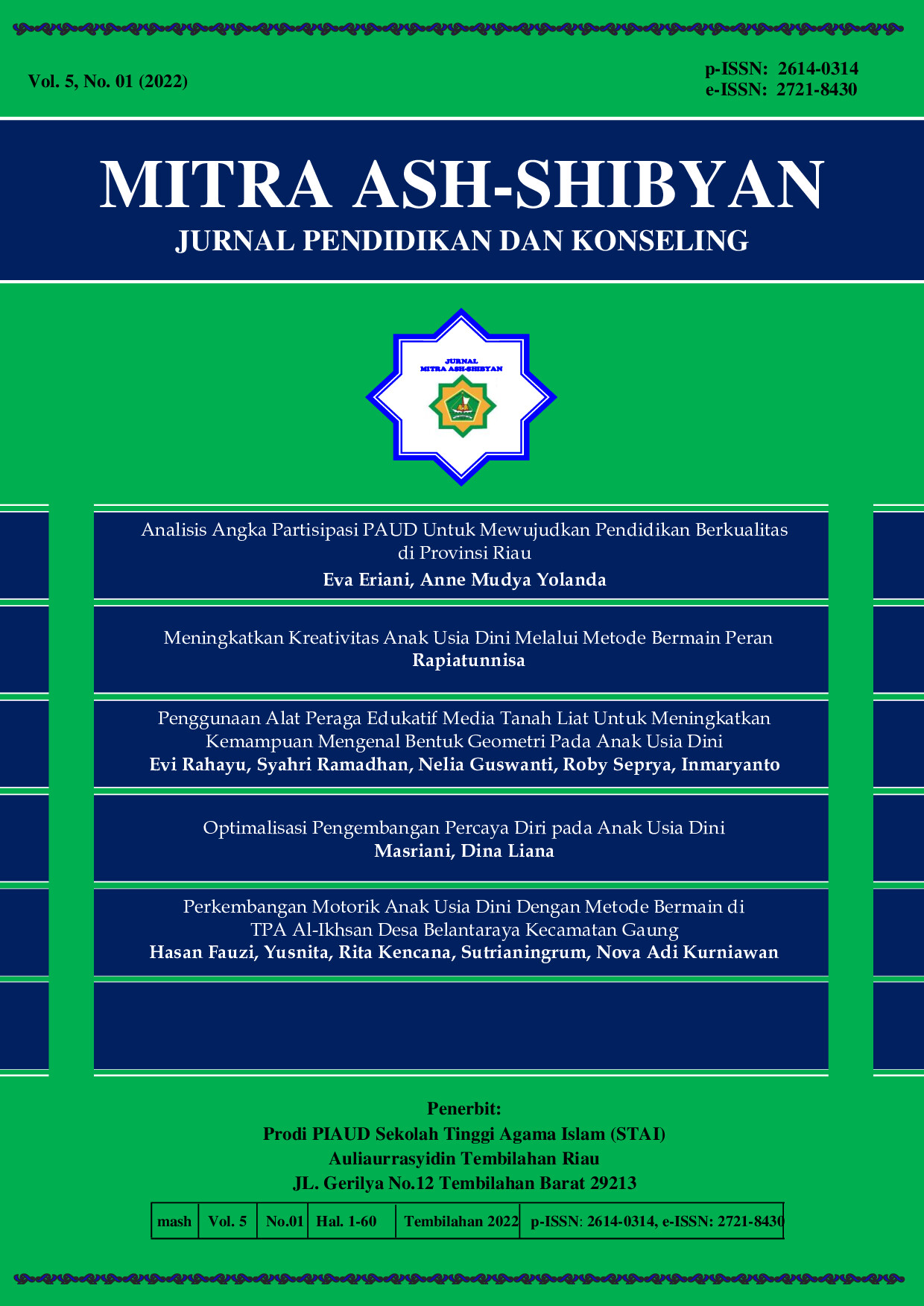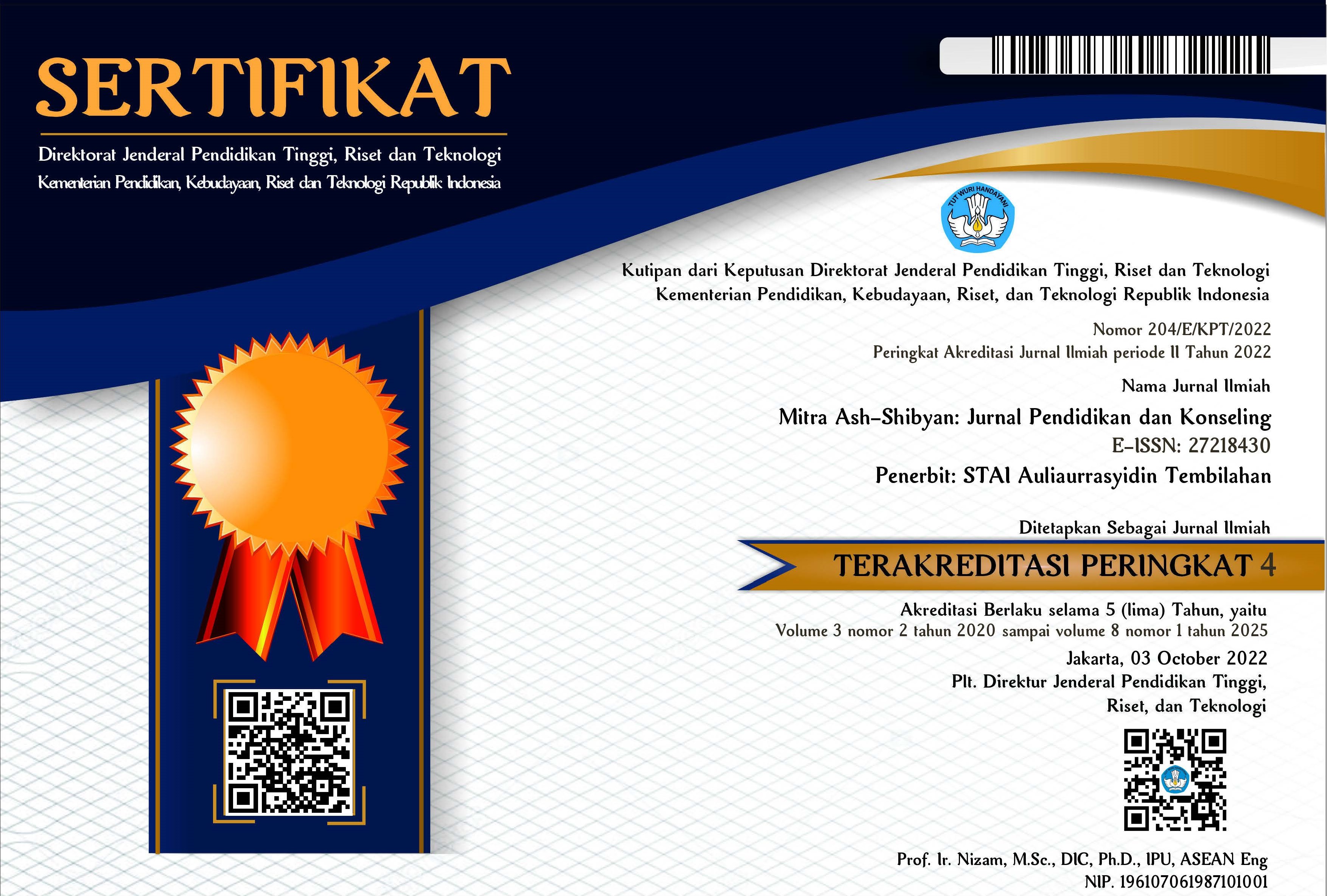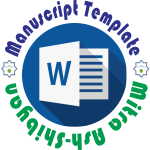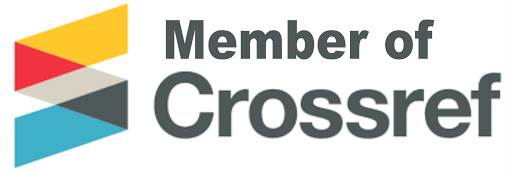Perkembangan Motorik Anak Usia Dini Dengan Metode Bermain di TPA Al-Ikhsan Desa Belantaraya Kecamatan Gaung
DOI:
https://doi.org/10.46963/mash.v5i01.484Keywords:
Motor, Role-Playing, Early ChildhoodAbstract
Early childhood is those who are at the age of 0-6 years. They are at a very rapid stage of growth and development, both physically and psychologically. They learn in their own way. They have two aspects of development, namely biological and psychological. This is quantitative descriptive research, which was conducted at the TPA Al-Ikhsan, Belantaraya, Indragiri Hilir, Riau. The subject of this research was 23 students of TPA Al-Ikhsan. The data in this study was taken by using tests of early childhood motor skills, and documentation. They were then analyzed by using P= ×100% to see the motor skills of children. The results presented that the students’ motoric skills were at 54,10% in the category of developed as expected (DE). On the other hand, the students’ motoric skills developed as expected.
Downloads
References
E. Mulyasa, 2016, Manajemen PAUD, et. Ke-4, Bandung: PT Remaja Rosdakarya,
Hurlock, Elizabeth B. 1998. Perkembangan Anak Jilid I. Jakarta: Erlangga
Moeslichatoen, 2004, Metode Pengajaran Di Taman Kanak-Kanak, Jakarta, PT Rineka Cipta
Muh. Daud, Dkk, 2021, Buku Ajar Psikologi Perkembangan Anak, Jakarta: Prenadamedia Group,
Peraturan Menteri Pendidikan Dan Kebudayaan Republik Indonesia, Nomor 137 Tahun 2014, Tentang Standar Nasional Pendidikan Anak Usia Dini Dengan Rahmat Tuhan Yang Maha Esa Menteri Pendidikan Dan Kebudayaan Republik Indonesia
Suyadi dkk, 2017, Konsep Dasar Paud , Bandung: PT Remaja Rosdakarya,
Uyu Wahyudin , Mubiar Agustin,2011, Penilaian Perkembangan Anak Usia Dini, Bandung, PT Refika Aditama
Zukhirin, Muhammad Afandi,2014, Pendidikan Anak Usia Dini, Jakarta, Prenada Media Group
Downloads
Published
Issue
Section
License
Authors who publish with this journal agree to the following terms:
1. Copyright on any article is retained by the author(s).
2. The author grants the journal, right of first publication with the work simultaneously licensed under a Creative Commons Attribution shareAlike 4.0 International License that allows others to share the work with an acknowledgment of the work’s authorship and initial publication in this journal.
3. Authors are able to enter into separate, additional contractual arrangements for the non-exclusive distribution of the journal’s published version of the work (e.g., post it to an institutional repository or publish it in a book), with an acknowledgment of its initial publication in this journal.
4. Authors are permitted and encouraged to post their work online (e.g., in institutional repositories or on their website) prior to and during the submission process, as it can lead to productive exchanges, as well as earlier and greater citation of published work.
5. The article and any associated published material is distributed under the Creative Commons Attribution-ShareAlike 4.0 International License







2.png)



